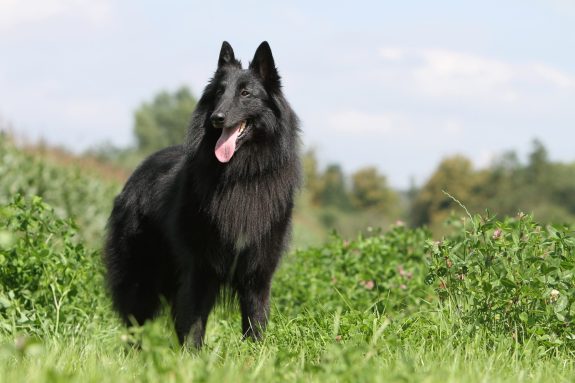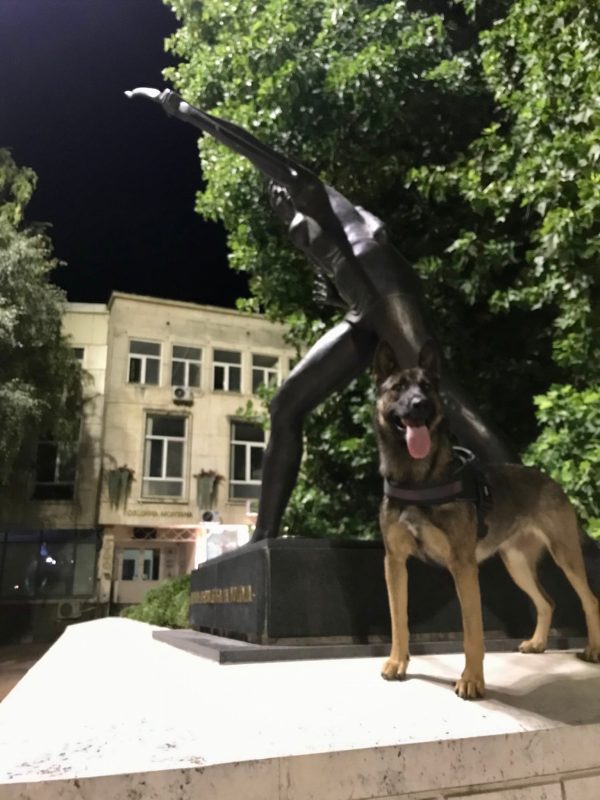
If your idea of “a little light reading” is to peruse breed standards, you’ll have come across the term, “four square.” Six breed standards allude to standing four square using verbiage like, “when the dog comes to rest he should stand four square,” “He stands squarely on all fours,” and “should stand squarely on all fours.” A few other breeds use the term when discussing how to measure a dog (“height is measured by having the dog standing four square and taking a measurement from the withers plumb through the elbow joint to the ground”), and we even came across it in site offering handling tips (“We are going to teach the ‘step’ exercise. This is when the dog steps forward with it’s front feet and eventually strikes a four square free pose.”)
At the risk of stating the obvious, standing “four square” simply means that the dog is standing on all four legs, and unless a dog is missing a limb, he going to stand on the legs he’s got, or topple over.

Photo by Malcolmx Anjelita of two year old “Tea,” and shared with consent
The phrase, however, actually means more than that, and you get a sense of its importance when it’s pointed out that all the standards we came across using the term are herding breeds: the Australian Cattle Dog, Mudi, and all four Belgian Sheepdogs. It also comes up in unofficial breed forums, i.e., the Kelpie and Blue Lacy. As an aside, “four tracking” is mentioned in the standard of the French Bulldog, but we’ll discuss that another time.
Aside from telegraphing to the flock or herd that the dog is steady, resolute, unyielding and in charge, a dog that standing four square is balanced and ready for action. In dog parlance, a dog is “under himself” when he is naturally standing “four squared.”
Image: Majestueux Berger belge – Groenendael by Dogs/AdobeStockPhoto
